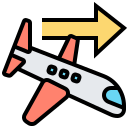Discover how innovative Smart Tourism Solutions are revolutionizing the travel industry by integrating advanced technologies to enhance the traveler experience, streamline city management, and promote sustainable growth. With the rise of digital platforms, interconnected systems, and real-time data, the tourism sector is adapting to meet the evolving expectations of visitors while supporting local communities and stakeholders. On this page, explore the core concepts, benefits, and practical applications that define modern, intelligent tourism.
Seamless Digital Experiences
Personalized Travel Planning
Personalized travel planning uses artificial intelligence and data analytics to curate unique travel experiences tailored to individual preferences, interests, and budgets. By analyzing user data such as travel history, search patterns, and feedback, smart platforms suggest optimal destinations, accommodations, and activities. This technology not only simplifies decision-making but also maximizes satisfaction by presenting travelers with options that genuinely align with their expectations. Personalization leads to more meaningful memories and greater loyalty to destinations and service providers.
Mobile Interactions on the Go
Modern travelers rely heavily on mobile devices for real-time information, navigation, bookings, and communication. Smart Tourism Solutions ensure that destination information, event updates, and personalized recommendations are accessible through intuitive apps or responsive web platforms. These mobile interfaces integrate location-based services, language translation, and emergency assistance, keeping tourists informed and connected throughout their visit. Smooth mobile experiences contribute to stress-free travel, making exploration more efficient and enjoyable.
Digital Check-In and Contactless Services
With increasing awareness of safety and hygiene, digital check-in systems and contactless services have become core to smart tourism. Travelers can now use mobile apps or kiosks to check into hotels, access rooms, or pay for attractions without direct human contact. Integration of QR codes, facial recognition, and digital wallets further enhances convenience and peace of mind. These technologies reduce wait times, minimize errors, and deliver a frictionless arrival and departure process, raising the overall quality of hospitality.
Sustainable Destination Management
The Internet of Things (IoT) empowers destinations to monitor and manage resources like water, energy, and waste with remarkable precision. Sensors installed at tourist hotspots, hotels, and transportation hubs transmit real-time data to centralized systems. This insight enables authorities to optimize resource allocation, detect overconsumption, and implement sustainable practices. Better resource management not only reduces environmental impact but also lowers operational costs and enhances the appeal of eco-friendly destinations.
Smart Tourism Solutions utilize big data and analytics to predict tourist numbers, manage flows, and prevent overcrowding at popular sites. Apps and digital signages can suggest alternative routes or times, distributing visitors more evenly and enhancing safety. Real-time information helps authorities implement dynamic pricing or advance reservation systems, minimizing stress on local infrastructure. Optimizing visitor flows safeguards cultural heritage, mitigates negative impacts, and improves the experience for everyone involved.
Transportation is a critical aspect of sustainable tourism. Smart mobility integrates various forms of eco-friendly transport—from bikes and electric buses to ride-sharing platforms—into a unified system accessible to visitors through digital interfaces. These solutions help reduce congestion, lower emissions, and promote accessible travel. Real-time transportation updates, dynamic route adjustments, and easy payment options make it convenient for travelers to move around while minimizing their ecological footprint.

Augmented Reality Guides
Augmented reality (AR) guides overlay digital information onto physical environments, transforming the way travelers explore attractions and landmarks. Whether through smartphones or dedicated AR devices, tourists can access interactive maps, historical facts, or multilingual audio-visual content in real time as they move about. This immersive layer of information brings stories to life, enhancing understanding and deepening emotional connections to the destination. AR also makes self-guided tours more informative and accessible for diverse audiences.

Virtual Tours and Pre-Trip Exploration
Virtual tours allow potential visitors to experience destinations, museums, or attractions remotely before their actual trips. With high-definition video, 360-degree imagery, and engaging narration, virtual tours offer a taste of what to expect, helping tourists plan their itineraries with confidence. This technology is especially beneficial for those with mobility limitations or concerns about accessibility. Virtual exploration can inspire interest, accelerate decision-making, and ensure that expectations align with reality.

Interactive Cultural Experiences
Smart Tourism Solutions are redefining cultural engagement through interactive exhibits and gamified experiences both in-person and online. For example, museums may implement touchscreens, VR installations, or app-based scavenger hunts that immerse visitors in local traditions and folklore. Such methods actively involve tourists in learning, making the experience entertaining and educational. By blending technology with culture, destinations can foster deeper appreciation and encourage meaningful participation.
